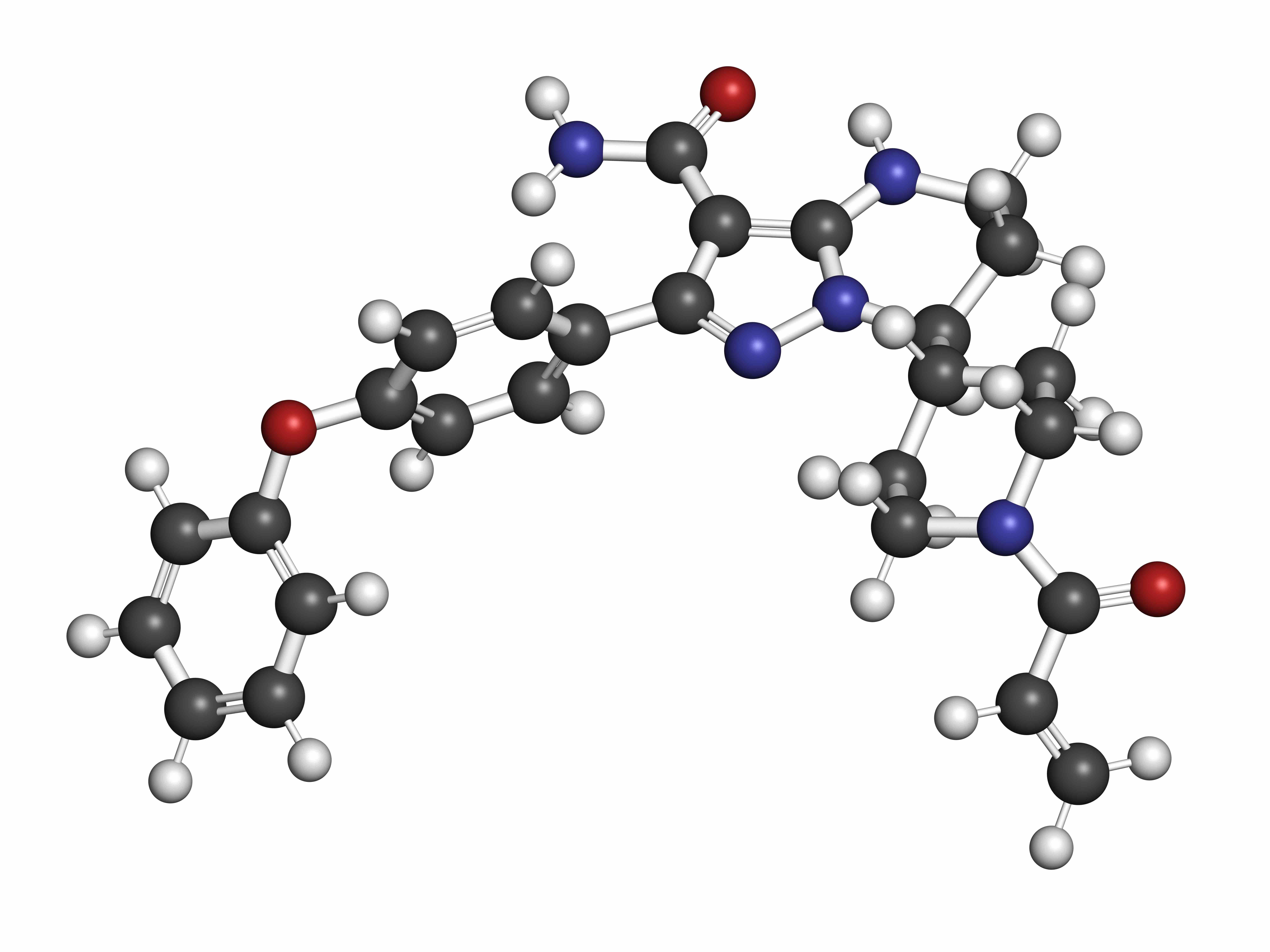- Center on Health Equity & Access
- Clinical
- Health Care Cost
- Health Care Delivery
- Insurance
- Policy
- Technology
- Value-Based Care
Zanubrutinib May Be Viable Option After Acalabrutinib Intolerance in B-Cell Malignancies
Patients with B-cell malignancies who were intolerant to treatment with acalabrutinib experienced clinically meaningful benefits when treated with zanubrutinib, suggesting zanubrutinib may be a viable treatment option for this population.
This article was originally published by OncLive®.
Patients with B-cell malignancies who were intolerant to treatment with acalabrutinib (Calquence) experienced clinically meaningful benefits when treated with zanubrutinib (Brukinsa), according to findings from the phase 2 BGB-3111-215 trial (NCT04116437).1
Zanubrutinib rendering | Image credit: molekuul.be - stock.adobe.com

At the 2023 American Society of Hematology Annual Meeting and Exposition, data from cohort 2 of patients intolerant to acalabrutinib (n = 27) were presented. The median exposure to zanubrutinib lasted 6 months longer than the patient’s cumulative exposure to acalabrutinib before treatment discontinuation at 11.4 months (range, 0.5-32.2) vs 5.4 months (range, 0.5-33.7), respectively.
Further, 70% of the acalabrutinib intolerance events experienced by patients did not reoccur at any grade with zanubrutinib. Of those that did recur, no events recurred at a higher severity. The most common grade 2 or higher of these acalabrutinib intolerance events that recurred during treatment with zanubrutinib included arthralgia (n = 6), headache (n = 5), myalgia (n = 5), diarrhea (n = 3), rash (n = 3), fatigue (n = 2), and hemorrhage (n = 2).
According to Mazyar Shadman, MD, MPH, who presented these data at the 2023 ASH meeting, no adverse events (AEs) led to death, but 2 AEs led to treatment discontinuation of zanubrutinib. Other patients discontinued zanubrutinib due to physician decision (n = 2), patient withdrawal (n = 2), and progressive disease ([PD] n = 1). The AEs that led to discontinuation of zanubrutinib were a recurrence of grade 2 myalgia in 1 patient and grade 3 diarrhea in another.
Looking at grade 3 or higher AEs, 3 patients experienced a neutrophil count decrease after zanubrutinib, but anemia, thrombocytopenia, nor platelet count decrease occurred. Overall, 7 patients had a serious AE with 16 events leading to dose interruption and 6 leading to dose reduction.
In the phase 2 study, patients with previously treated B-cell malignances included those with chronic lymphocytic leukemia (CLL; n = 17), small lymphocytic lymphoma (SLL; n = 2), Waldenström’s macroglobulinemia (n = 4), mantle cell lymphoma (n = 2), or marginal zone lymphoma (n = 2). To be enrolled in the study, they had to be deemed intolerant of a prior Bruton tyrosine kinase (BTK) inhibitor treatment and could not have either Richter transformation or PD while on BTK treatment. In the first cohort of the study, 57 patients intolerant to ibrutinib (Imbruvica) were enrolled. In cohort 1 and 2, patients were given either 160 mg of zanubrutinib twice a day or 320 mg once a day.
The median age of patients in cohort 2 was 73 years (range, 51-87), with a majority of male patients (63%); most had an ECOG performance status of 0 (67%).
According to Shadman, associate professor in the clinical research division and innovators Network Endowed Chair at the Fred Hutch Cancer Center, previous findings from the first cohort showed similar promise with zanubrutinib after ibrutinib.2 In cohort 2, 19 of the acalabrutinib-intolerant patients received the 160 mg dose and 8 received the 320 mg dose. Thirteen of the 27 patients intolerant to acalabrutinib were also intolerant to previous use of ibrutinib, with 12 given a prior ibrutinib monotherapy and 1 patient on an ibrutinib combination therapy.1 Twenty-six patients intolerant to acalabrutinib received the BTK as a monotherapy and 1 patient was intolerant to an acalabrutinib combination regimen.1
Twenty-five of the patients in cohort 2 were evaluable for efficacy after zanubrutinib treatment. Investigators observed a 96% disease control rate (95% CI, 80%-100%), defined as patients with stable disease (SD) or better with zanubrutinib. There was an overall response rate of 64% (95% CI, 43%-82%), defined as having a minor response or better, to the next-generation BTK inhibitor.
Overall, 48% of patients had a PR, 4% had a very good partial response, 4% had a minor response, 32% had SD, and 4% had PD. The median time to best overall response was 3.0 months (range, 2.7-11.1) and time to the first overall response was seen at a median of 2.9 months (range, 2.7-11.1). Of the patients with either CLL or SLL, 71% had a partial response (PR) with lymphocytosis or better.
“The results of this study demonstrated that zanubrutinib may be a viable option for patients who are intolerant of acalabrutinib,” concluded Shadman.
References
1. Shadman M, Flinn IW, Kingsley E, et al. Zanubrutinib in acalabrutinib-intolerant patients (pts) with B-cell malignancies. Blood. 2023;142(suppl 1):3279. doi:10.1182/blood-2023-174096
2. Shadman M, Flinn IW, Levy MY, et al. Zanubrutinib in patients with previously treated B-cell malignancies intolerant of previous Bruton tyrosine kinase inhibitors in the USA: a phase 2, open-label, single-arm study. Lancet Haematol. 2023;10(1):e35-e45. doi:10.1016/S2352-3026(22)00320-9
